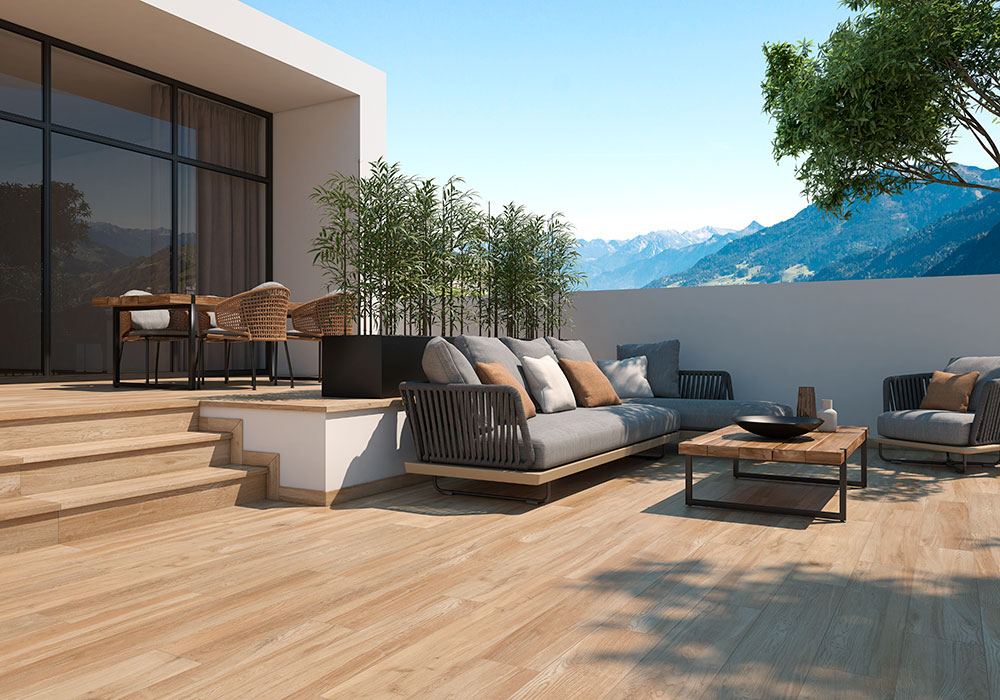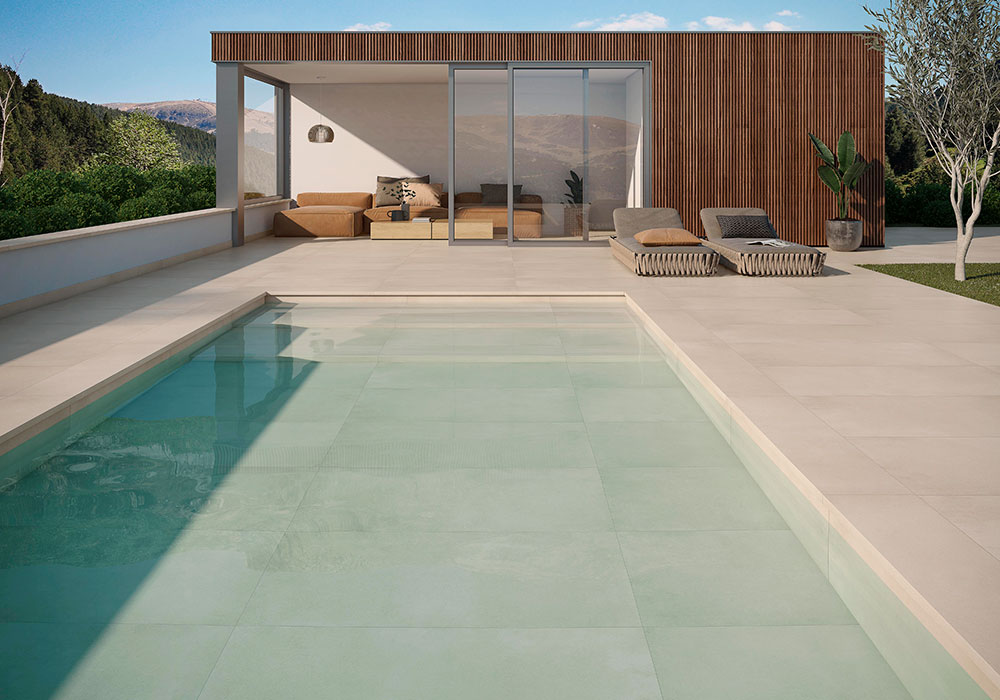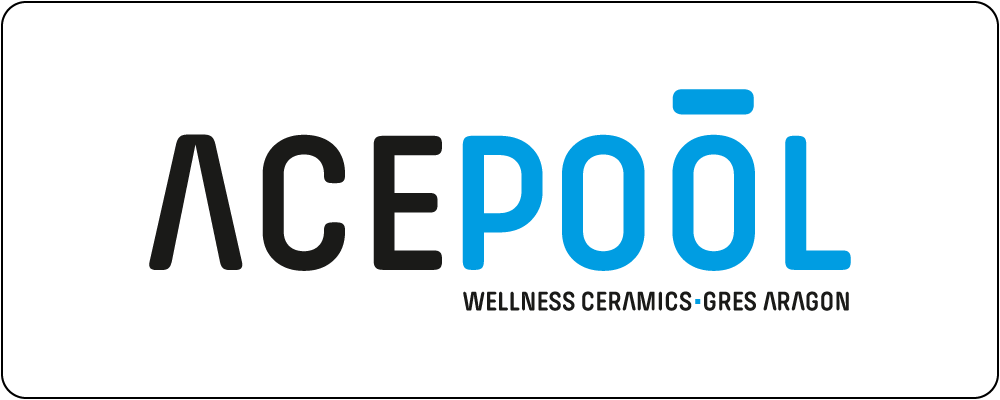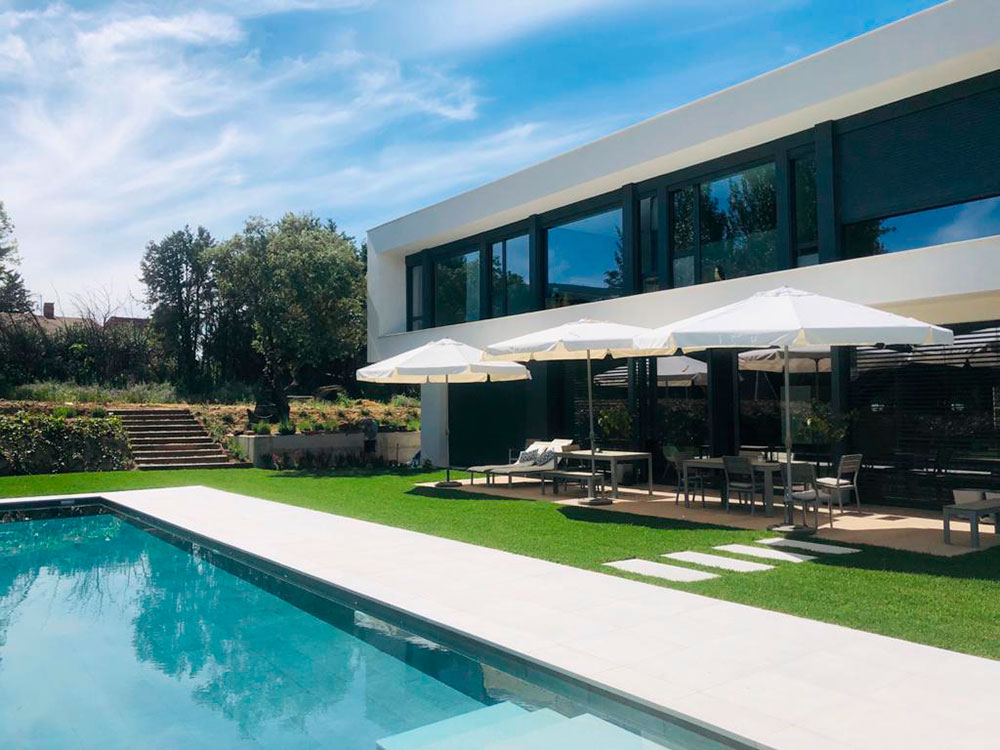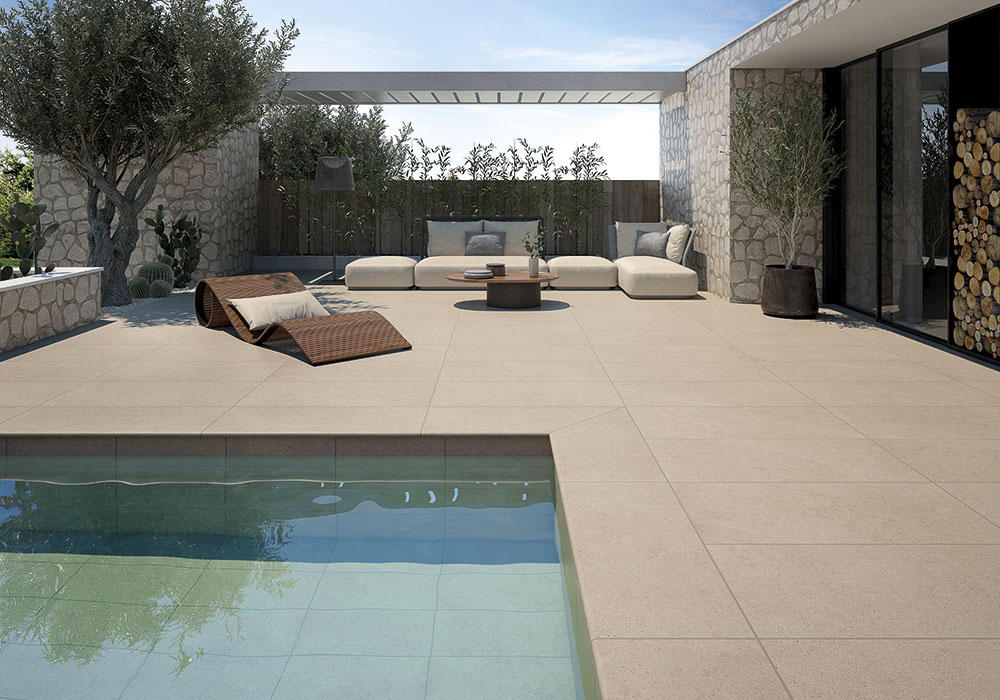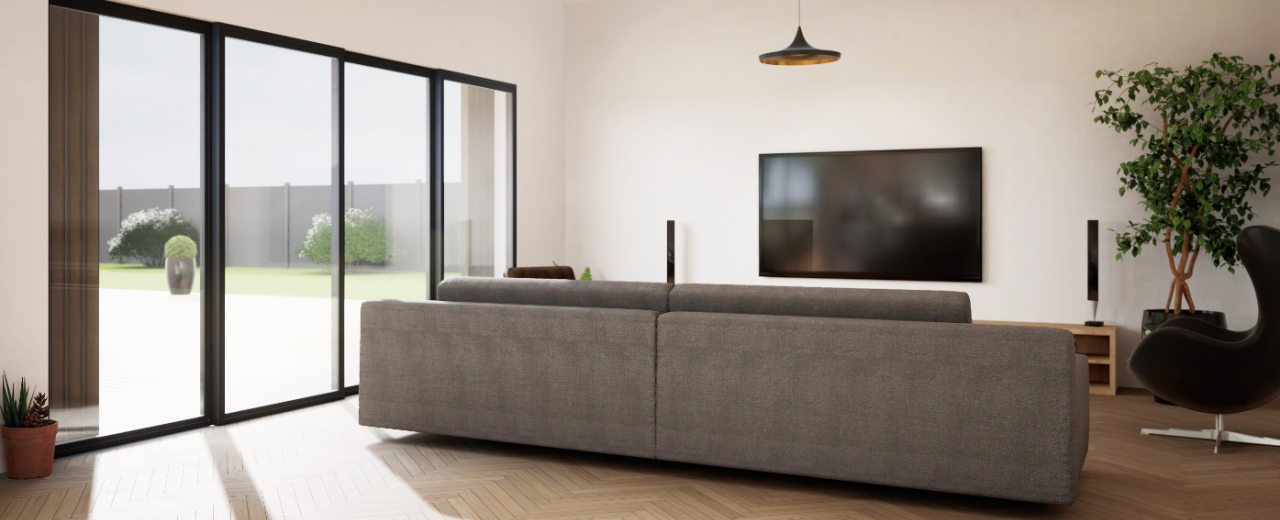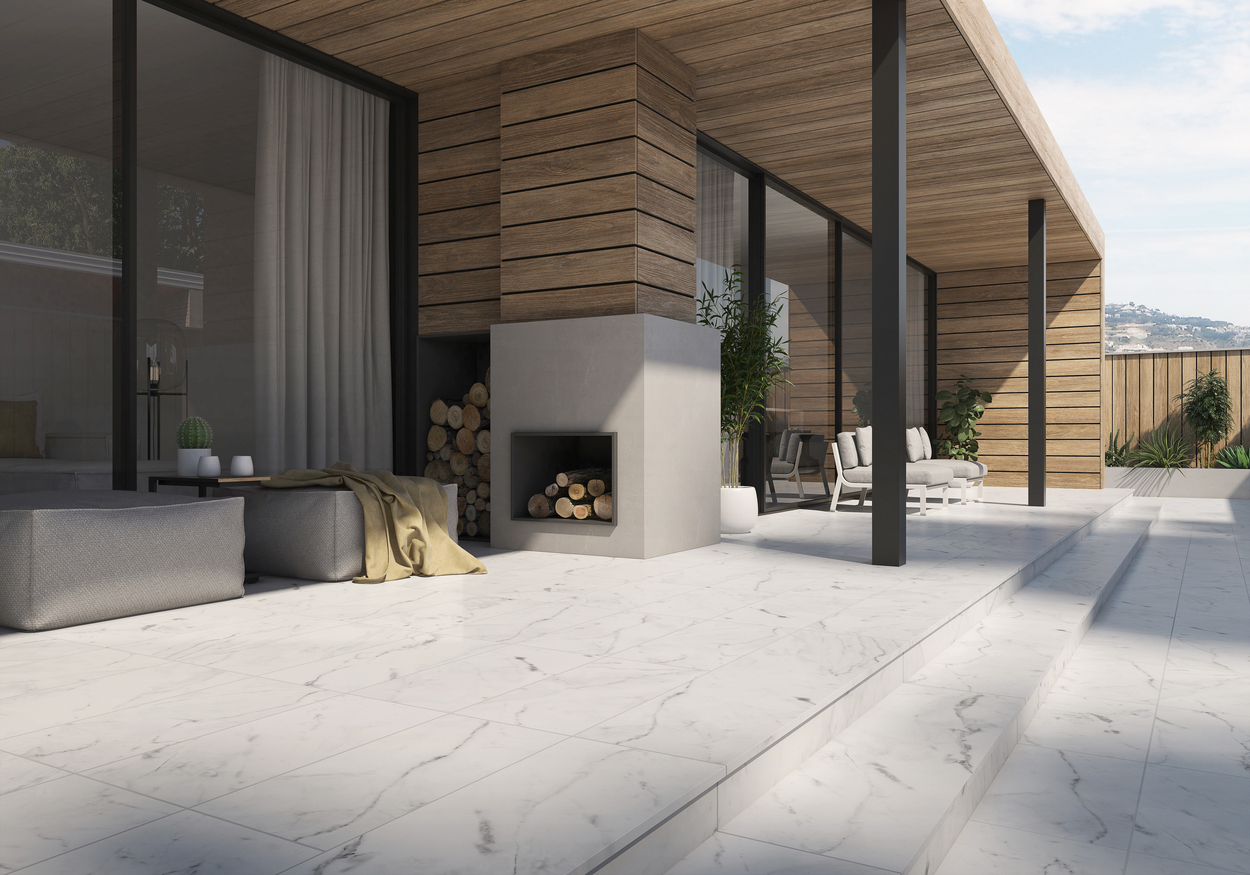CERAMIC TILE INSTALLATION FOR A PERFECT STYLE
The method of installing ceramic tiles to cover the floors or walls of our homes is a factor we need to consider when choosing a ceramic tile. Usually, we focus on the format, color, type of finish, brand, budget...
However, we often forget that the perfect ally to give the final touch to the style we want to create will be the layout of the ceramic tiles.
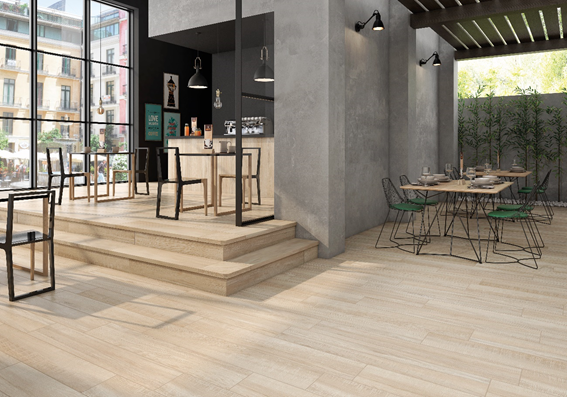
WHAT ARE THE BEST COMBINATIONS FOR INSTALLING CERAMIC TILES?
There are several possibilities for laying ceramic tiles ranging from the most linear designs, with which we will provide our room with order and harmony; to the most asymmetrical, with which we will achieve a unique and original style.
In any case, there is no single solution, but we will have to place our tiles depending on the room in question, the model of ceramic tile that we have chosen or the personality we want to give to our home.
Below, you will find the most popular ceramic tile patterns and layouts, with which the help of your designer, installer or specialist in renovation, your walls and floors will add the final touch to your home.
Types of Ceramic Tile Installation Designs
1. Straight Joint Horizontal

This traditional method, ideal for laying porcelain or ceramic floors, is done by placing one tile after another while maintaining the alignment of the horizontal and vertical joints. This achieves a style that conveys order and never goes out of fashion.
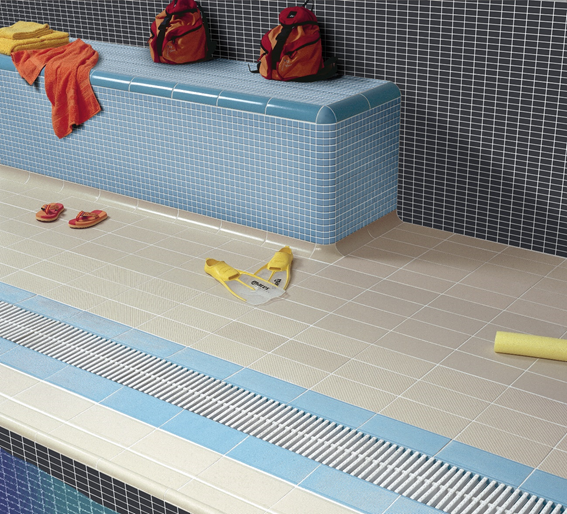
The installation with horizontal staggered joints is commonly used in swimming pools and sports complexes, where the 12×25 format is typically installed, as manufactured by Gres Aragón in its pool series. ACEPOOL
2. Straight Joint Vertical
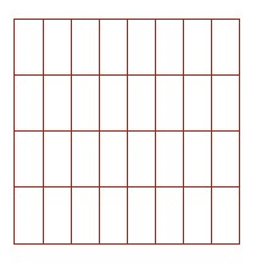
Laying ceramic tiles in this way on walls helps to create an effect of greater height, which is especially useful in kitchens and small bathrooms.
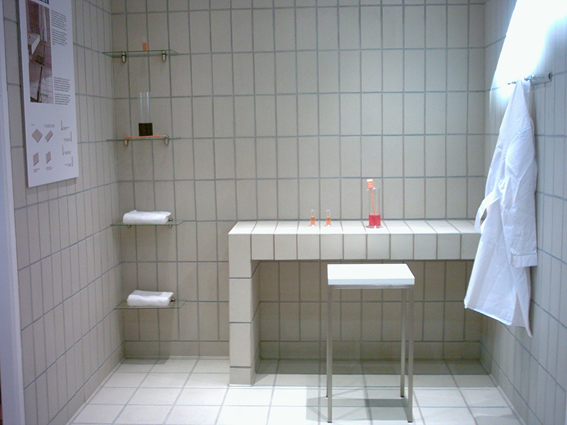
In small spaces laying porcelain and ceramic floor tiles with a vertical running joint is very useful to give a feeling of greater height. In addition, the ceramic series ACIKER GRES ARAGÓN ceramic series has the Bioklinker technology, that protects against bacteria, fungi, and other pathogens.
3. Cross Line
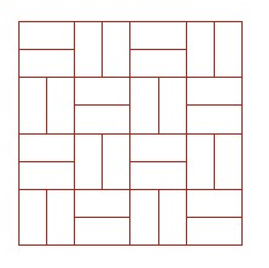
The installation of rectangular ceramic tiles is done by alternating two pieces vertically followed by two pieces horizontally. This design, inspired by wicker baskets, is a decorative element that gives the space its own personality. The greater the contrast between the color of the ceramic tile and that of the joint, the stronger the effect of breaking linearity.

To add a touch of greater originality, we can use the variation of alternating one horizontal piece for every two vertical pieces or vice versa
4. Offset Joint

The installation of rectangular ceramic tiles in this case is done by aligning the vertical joint precisely with the center of the tile in the upper and lower rows. This is a very simple way to give a special touch to our walls or floors and an effective pattern for placing elongated tiles and rectangular porcelain flooring.
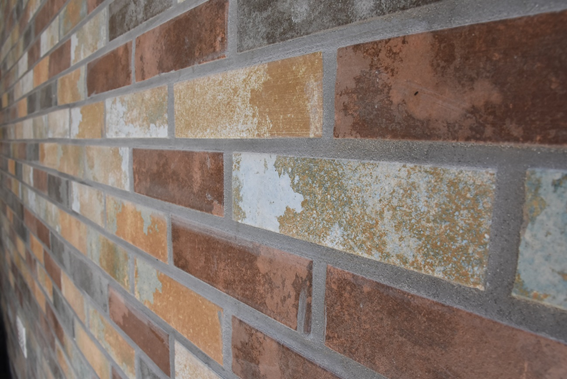
With such a simple installation method as the offset joint, the walls achieve an original yet orderly result.

In the case of longer porcelain pavements such as wood look tiles, it is recommended to lay tiles with an offset by less than half the width of the tile.
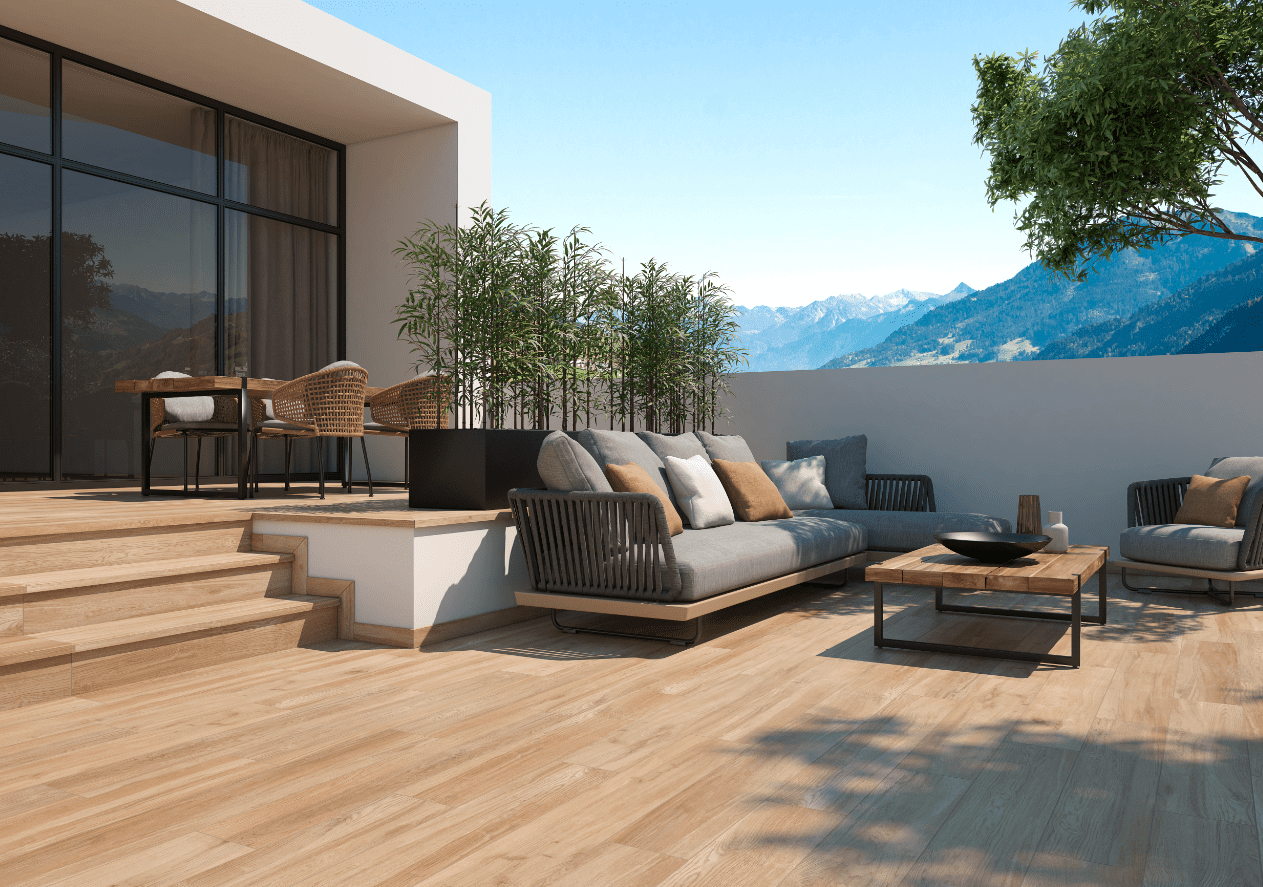
The rectified porcelain series ORDESA de Gres Aragón, en formato 20×120, es ideal para este tipo de colocación, tanto en interior como en exterior, en cualquiera de sus tonalidades Beige, Marrón y Natural.
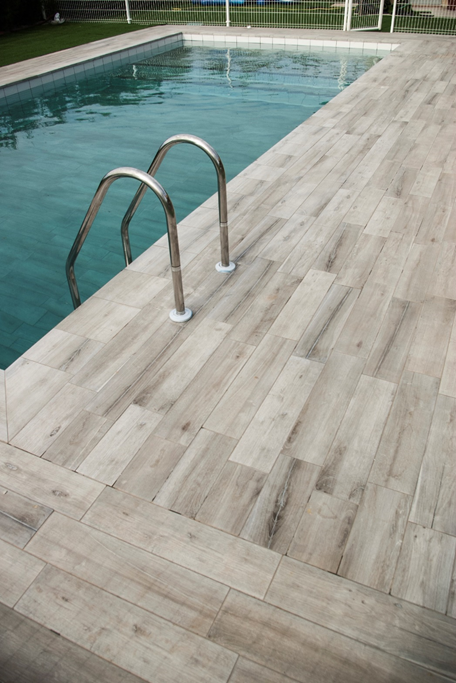
The installation known as offset matting is the most popular type of installation in the installation of imitation wood flooring, such as the ORDESA collection.
5. Herringbone
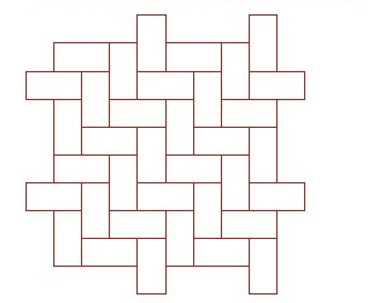
The placement of ceramic tiles in a staggered zigzag pattern is carried out to achieve a particularly attractive result that adds an extra depth to the floors. In the case of rustic stoneware, the herringbone placement is a very original and groundbreaking solution.
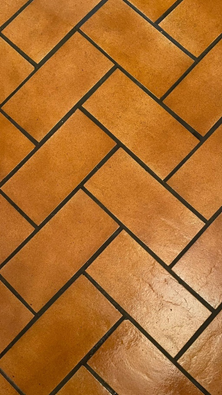
If we use a grout color that contrasts significantly with the tile color, we will enhance the effect we seek with the installation.
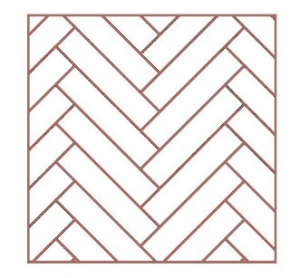
This design is very popular when laying wood-imitation porcelain ceramic tiles, such as the rectified porcelain stoneware series. RODENO and ORDESA, since it adds an elegant and chic touch while remaining modern over time, both in terraces and indoors.
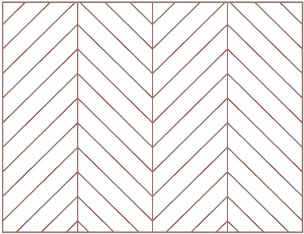
In the laying of ceramic tiles there is a variant, known as Chevron, in which the tiles are laid in a V-shape. To do this, the tiles must be cut at the ends at an angle of 45 degrees. In order to achieve a perfect result, the help of a professional is highly recommended.
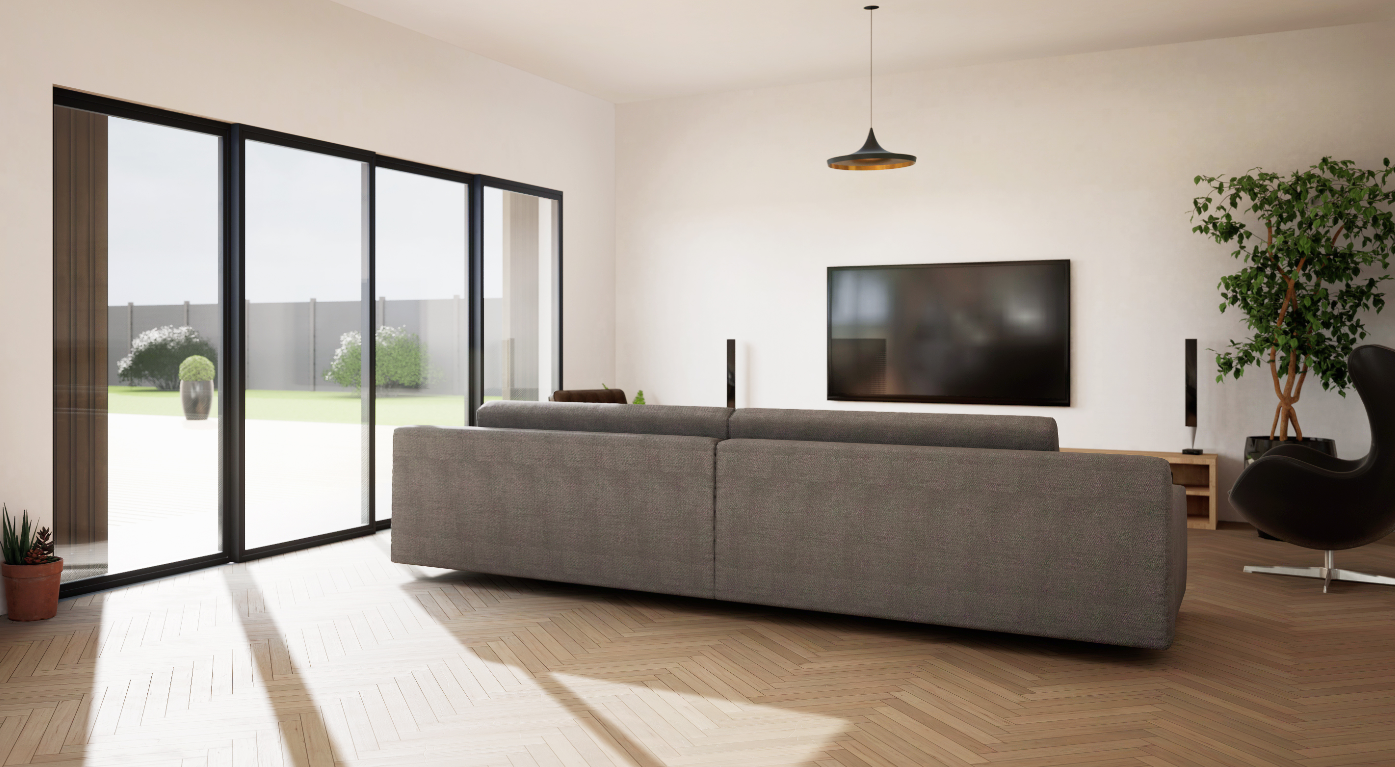
The Chevron installation style creates a very modern yet elegant effect thanks to the V-shaped arrangement of the tiles.
6. Modular
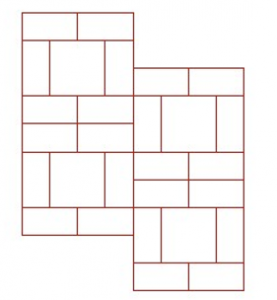
This tile placement pattern combines tiles of different formats based on a repeating geometric design. It is the best way to achieve an original and unique design while maintaining balance.
To do this, we will need a ceramic series that is available in various formats, as is the case with the porcelain series. URBAN, TIBET y MARBLE, available in 30×30, 30×60, 60×60, and 60×120. Additionally, these series come with a complete set of special pieces (steps, corners, overlapping edges, grids, etc.) that make them ideal for use in staircases, terraces, and pools.
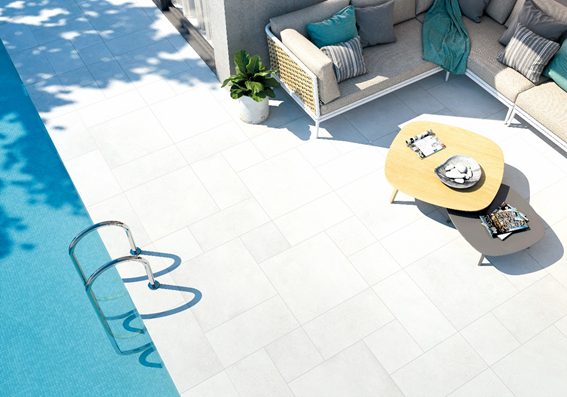
The URBAN series is available in four different formats, providing us with endless possibilities and spectacular results if we choose a modular installation of porcelain ceramic tiles.
Ultimately, regardless of the style we want to impart to our home, we must remember that the placement of ceramic tiles will be a fundamental supporting element.
To find the most suitable option, we should consider the ambiance we want to create, the formats to be used, and the personal touch we want to convey to our floors and walls. And, of course, don't forget that there's nothing better than having a professional decorator and renovation expert to ensure your tiles look exactly as you have always dreamed.
Ways to Install Large Rectangular Tiles
The aligned installation or horizontal joint method is the technique recommended by Gres de Aragón for installing large rectangular tiles. This technique involves placing the tiles side by side, keeping the joints aligned both horizontally and vertically, resulting in a continuous and uniform pattern.
This arrangement is ideal for spaces where the goal is to enhance the sense of spaciousness and continuity. By using large rectangular tiles in this pattern, a visual extension of the space is achieved, making the rooms appear larger and more open.
In addition, the uniformity of the horizontal joint pattern brings an air of serenity and order, which are key elements in modern interior design.
At Gres de Aragón, we recommend this technique not only for its minimalist and contemporary aesthetic but also for its ability to enhance the inherent beauty of large rectangular tiles.
This method of installation is particularly effective in spacious areas such as living rooms, open kitchens, or large bathrooms, where maximizing natural light and the sense of openness is desired.
Additionally, the horizontal joint pattern makes maintenance easier and more effective. By reducing visual and physical interruptions on the surface of the floor or wall, cleaning is simplified, preserving the beauty and splendor of the ceramic tiles with less effort.
Installing Porcelain Flooring
Installing porcelain flooring is a decision that should combine beauty and functionality. At Gres de Aragón, we offer a wide range of porcelain solutions that adapt to different styles and needs. Porcelain flooring is known for its durability and ease of maintenance, making it ideal for high-traffic areas and outdoors.
One of the main advantages of choosing porcelain flooring is its versatility. It can be installed in traditional patterns such as the aligned joint, or in more modern and daring designs like herringbone or modular placement.
Additionally, its ability to mimic other materials, such as wood or stone, provides the opportunity to create warm and inviting environments without sacrificing durability.
In commercial spaces or homes with a more contemporary aesthetic, porcelain flooring can be installed in large formats, reducing the lines of joints and creating a sense of spaciousness and continuity. This option is ideal for those seeking a minimalist and elegant finish.

If you are considering a new renovation or construction project and need expert advice on ceramic tile installation, do not hesitate to contact us. Our team is ready to help you select the most suitable option for your space, ensuring a perfect finish that combines beauty, durability, and design.


